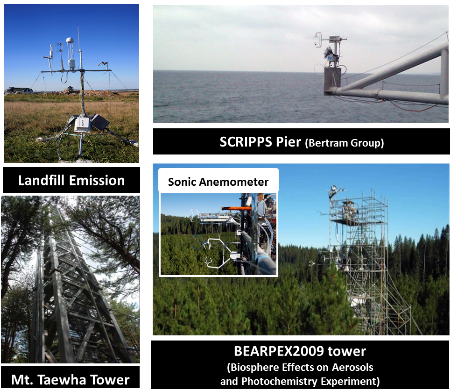
The fast time response of LED-CEAS instrument can be used to conduct flux measurements across the meso-scale interfaces (e.g. atmosphere-forest, atmosphere-urban and atmosphere-ocean etc.) . These experiments can help us understand the sources and sinks of species using well established micrometeorological techniques (i.e. eddy covariance and relaxed eddy accumulation).
Also, micro-scale interface modeling work is expected in collaboration with multi-phase modeling groups (e.g. NOAA Chemical Science Division) using results from LED-CEAS flow tube uptake coefficient experiments.
These process-level studies will enable us to estimate how much of the gas molecule will be partitioned to the aerosol phase and will allow estimates of its global scale impact.

nitrogen oxides fluxes across the atmosphere and forest interface during BEARPEX2009 works are shown below. From these works, a new exchange scheme has been proposed for nitrogen oxides species.